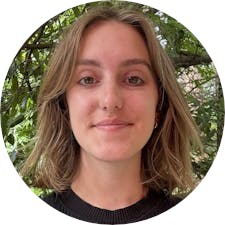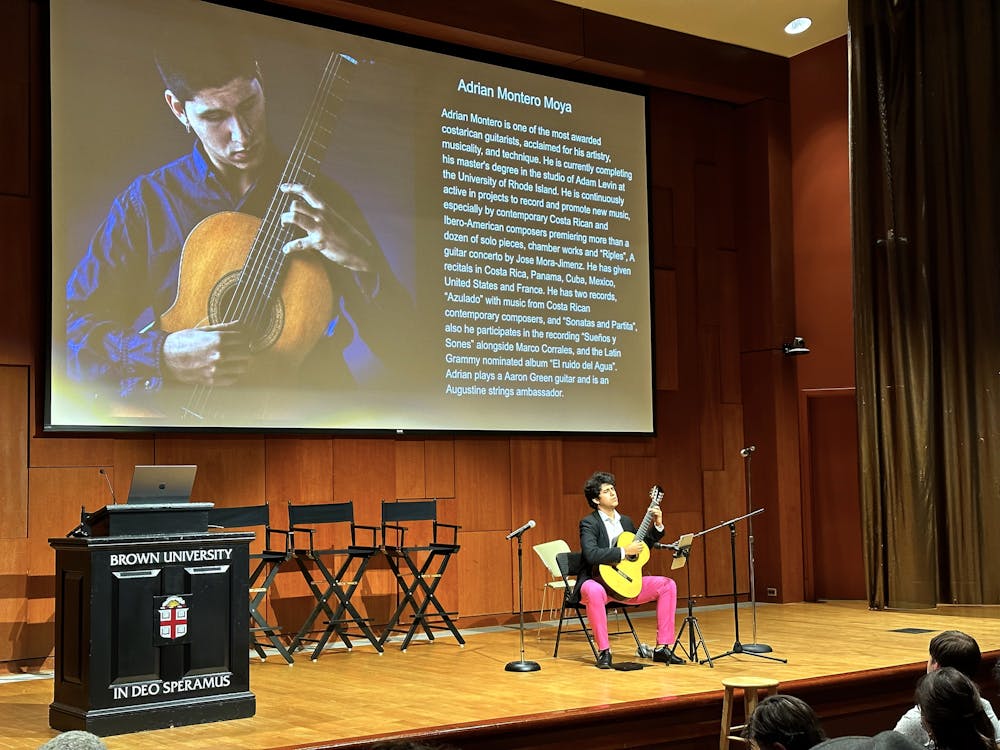What does science have to do with abstraction? Can music exist without sound? What are the roles that images play in science and art? These were but a few of the questions discussed by physicists and artists alike at Friday’s “For the Love of Physics: A Celebration of Music, Art and Nature” event.
Speakers at the event included nationally acclaimed artists as well as faculty from both Brown and the Rhode Island School of Design. Hosted by the Department of Physics and held at the Salomon Center, Friday’s event was part of a larger two-day series that also featured a physics workshop for middle school students and a premiere of Professor of Physics Jim Gates’s “Why I Chose Physics” video.
Angella Johnson, demonstrations manager of the physics department and the event’s primary organizer, and Professor of Physics Vesna Mitrovic, who is also chair of the department, introduced the event, speaking to the wide-ranging intersection between art and science.
The event opened with a performance from Adrian Montero, an accomplished musician with two albums and a long list of awards, who played three compositions on classical guitar.
Leland Baker, a renowned jazz saxophonist and music teacher, also performed two partially improvised pieces. Stephon Alexander, professor of physics, described Baker as a “young John Coltrane” and “one of the local leaders of the Providence jazz scene.”
Baker expressed that he sees beauty in the connection between music and physics. “A lot of the guys I admire … they didn’t know the inner workings of physics like you all do, but they knew that there was something about music and the vibrations and the frequencies and these formulas and structures that we work within and we also work to break,” he said.
Following Baker’s performance, Leah Beeferman, an assistant professor at RISD, presented her mixed-medium work with photography and video — most of which focuses on the contrast between the ideas of emptiness and density — while sharing her musings on quantum physics and the idea of space.
“I had been reading about quantum physics … and I was really struck by this idea of empty space and that empty space is not actually empty,” she said. “How does one make sense of this?”
Beeferman found a physical manifestation of her questions while taking a trip to the Arctic, where she felt that the landscape was empty but still carried an air of density. “From there I got excited about the possibility that I could look to understand these abstract ideas that I could never understand from my own experience,” she said.
Artist Jelena Berenc described that her connection to physics and art comes from her being an artist and her sibling being a physicist.
“In my sibling’s lab … the experiments are set up to test the question and confirm the answer,” she said. “In my studio, I set up an art process … to experience the question to understand the answer.”
“Both art and science … question the world and they offer us new ways of seeing it,” she added. Berenc’s art focuses on the concept of measurements — partially manifested in a project where she colored in 1,440 squares every day for one year to represent the number of minutes in 24 hours.
Jia Leo Li, assistant professor of physics, also described how he uses art as a tool in his work as a physicist. Art is “the most convenient tool to talk to people about what I’m thinking,” he said.
Li added that he previously illustrated an image to encourage students to take a physics course. He uses images to explain ideas on the subject and believes in the usefulness of turning data into art.
Closing out the night were the scientists, including Gates, and Director of the Center for Fundamental Physics Richard Gaitskell and Professor Stephon Alexander.
Gates, who is the founding director of the Brown Theoretical Physics Center, compared Einstein’s equations to a musical score. “It’s a score of the music that nature herself plays,” he said. Mathematics “is exquisite because it is apparently the only human language that allows us to have an intimate conversation with nature.”
He then showed the many ways data, created from equations, can create images and how that can assist in research. “Art can be directly used in theoretical physics as a tool that goes beyond the equations,” he said, arguing that computers and their ability to translate this data into images spur future discoveries in the world of theoretical physics.
Gaitskell spoke about this research on dark matter and Alexander closed out the night with a brief lecture about the physics of music.
As both a physics professor and a musician himself, Alexander described how the circle of fifths in music was inspired by the equation of an ellipse, the shape of the paths planets take as they orbit the sun.
Students in attendance at the event were grateful to hear about the relationship between science and art. Chu Gao, a first-year graduate student at RISD, was particularly pleased to hear about the event because her “personal art practice is based on science research.”
“When I saw this event’s name, I was like, ‘Okay, there are some people who can talk about art and science,’” she said.
Jeffrey Pogue ’27 said that he came to the event due to his interest in music and his desire to see the musicians perform.
“I didn’t expect to stay past the performances in the beginning but I found the physics so interesting that I stayed anyway,” he said. “I thought (the physics) was probably my favorite part of the whole thing.”

Cate Latimer is a university news editor covering faculty, University Hall and higher education. She is from Portland, OR, and studies English and Urban Studies. In her free time, you can find her playing ultimate frisbee or rewatching episodes of Parks and Rec.





